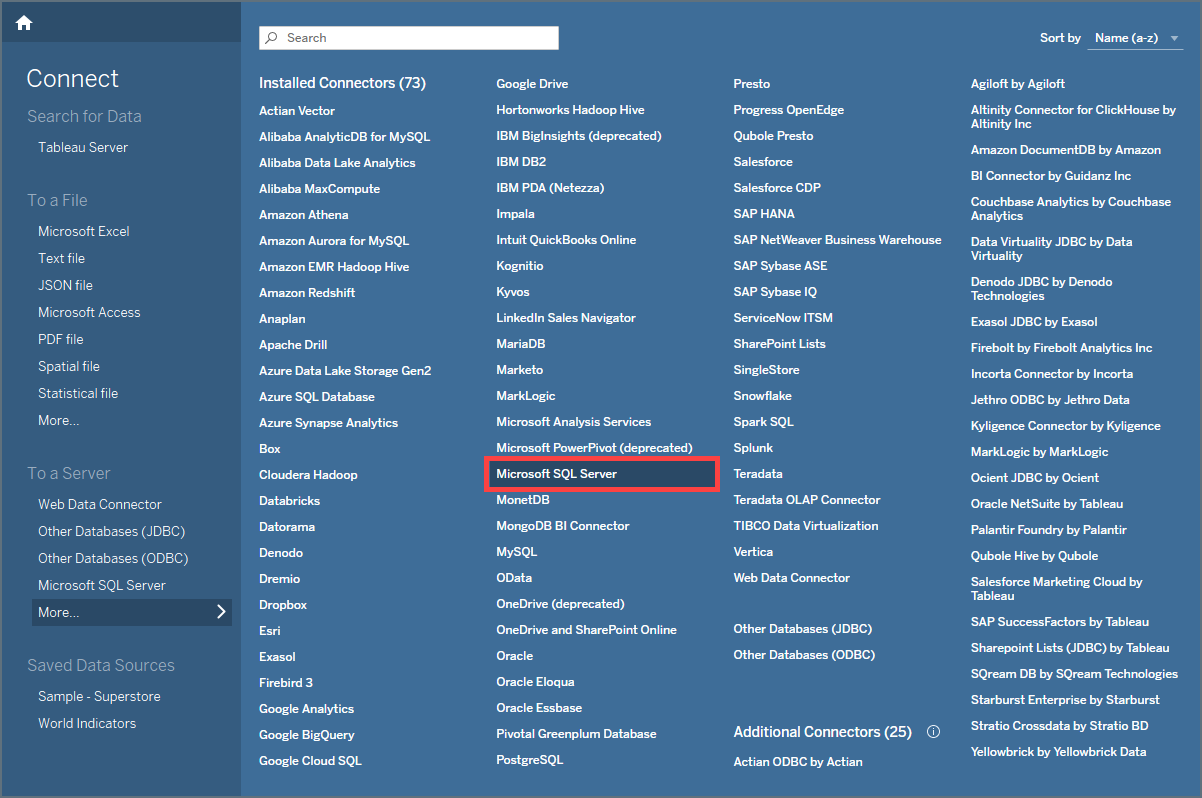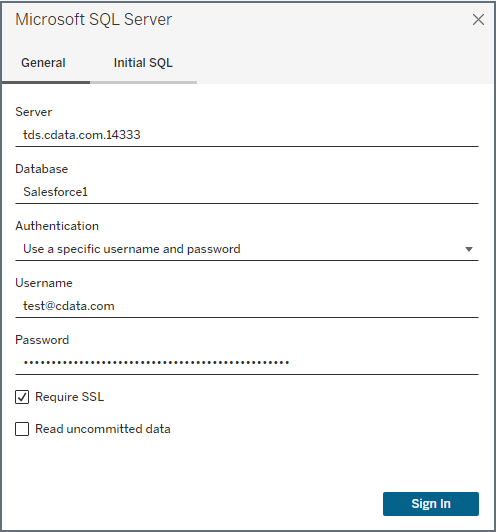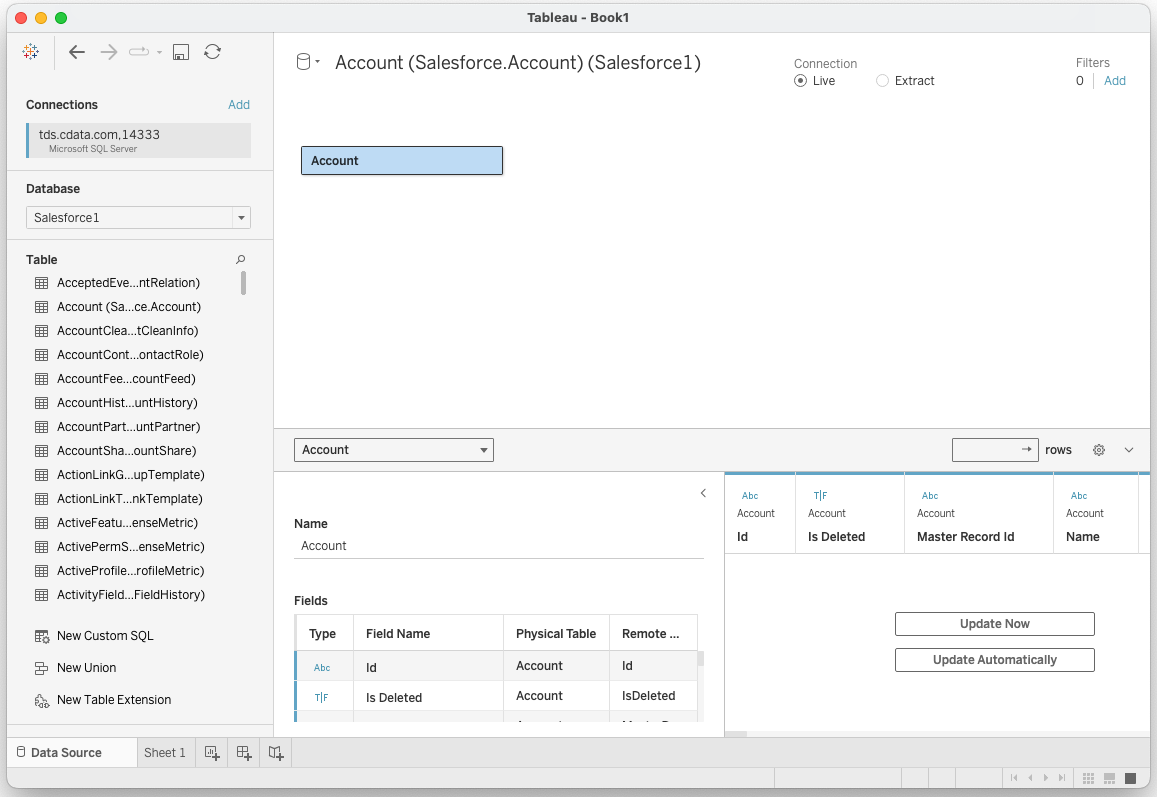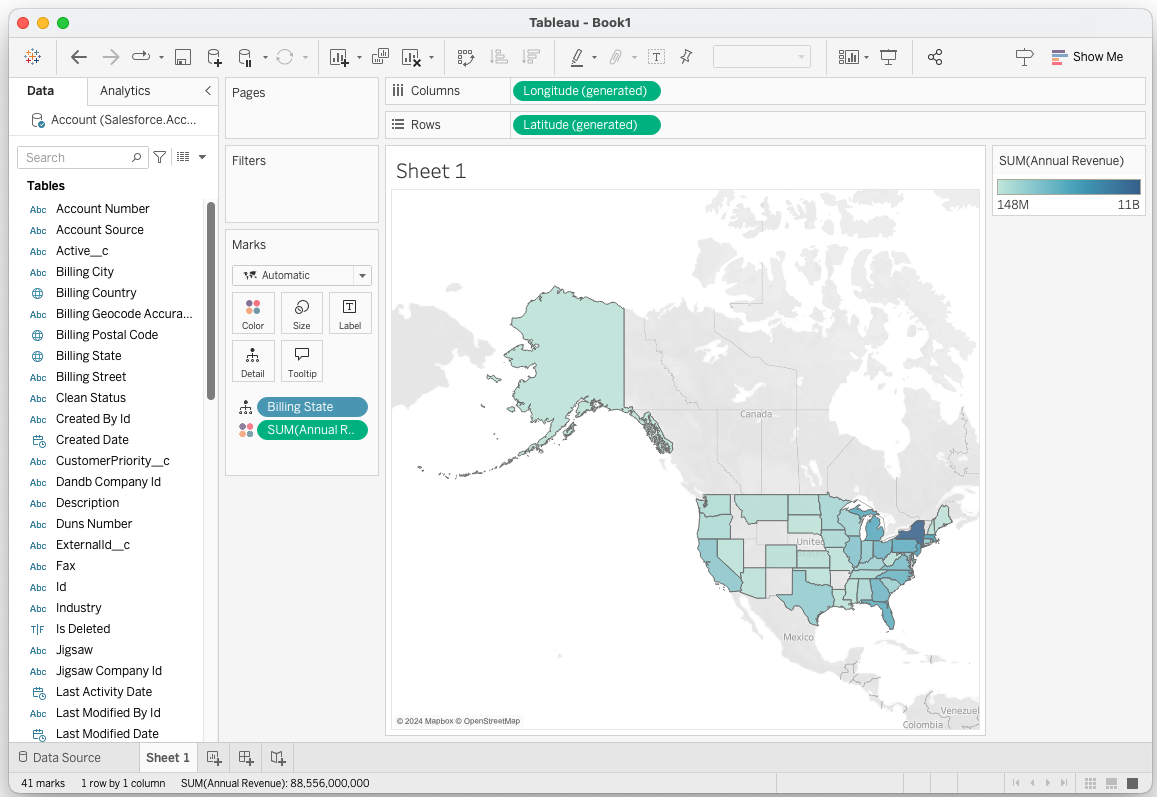Discover how a bimodal integration strategy can address the major data management challenges facing your organization today.
Get the Report →Build Databricks Visualizations in Tableau Desktop
Use CData Connect Cloud to connect to live Databricks data and build visualizations in Tableau.
Tableau is a visual analytics platform transforming the way businesses use data to solve problems. When paired with CData Connect Cloud, you get instant, cloud-to-cloud access to Databricks data for visualizations, dashboards, and more. This article shows how to connect to Databricks and build visualizations from Databricks data in Tableau.
About Databricks Data Integration
Accessing and integrating live data from Databricks has never been easier with CData. Customers rely on CData connectivity to:
- Access all versions of Databricks from Runtime Versions 9.1 - 13.X to both the Pro and Classic Databricks SQL versions.
- Leave Databricks in their preferred environment thanks to compatibility with any hosting solution.
- Secure authenticate in a variety of ways, including personal access token, Azure Service Principal, and Azure AD.
- Upload data to Databricks using Databricks File System, Azure Blog Storage, and AWS S3 Storage.
While many customers are using CData's solutions to migrate data from different systems into their Databricks data lakehouse, several customers use our live connectivity solutions to federate connectivity between their databases and Databricks. These customers are using SQL Server Linked Servers or Polybase to get live access to Databricks from within their existing RDBMs.
Read more about common Databricks use-cases and how CData's solutions help solve data problems in our blog: What is Databricks Used For? 6 Use Cases.
Getting Started
CData Connect Cloud provides a pure SQL Server, cloud-to-cloud interface for Databricks, allowing you to easily build visualizations from live Databricks data in Tableau without installing connectors. As you build visualizations, Tableau generates SQL queries to gather data. Using optimized data processing out of the box, CData Connect Cloud pushes all supported SQL operations (filters, JOINs, etc) directly to Databricks, leveraging server-side processing to quickly return Databricks data.
Configure Databricks Connectivity for Tableau
Connectivity to Databricks from Tableau is made possible through CData Connect Cloud. To work with Databricks data from Tableau, we start by creating and configuring a Databricks connection.
- Log into Connect Cloud, click Connections and click Add Connection
![Adding a Connection]()
- Select "Databricks" from the Add Connection panel
![Selecting a data source]()
-
Enter the necessary authentication properties to connect to Databricks.
To connect to a Databricks cluster, set the properties as described below.
Note: The needed values can be found in your Databricks instance by navigating to Clusters, and selecting the desired cluster, and selecting the JDBC/ODBC tab under Advanced Options.
- Server: Set to the Server Hostname of your Databricks cluster.
- HTTPPath: Set to the HTTP Path of your Databricks cluster.
- Token: Set to your personal access token (this value can be obtained by navigating to the User Settings page of your Databricks instance and selecting the Access Tokens tab).
![Configuring a connection (Salesforce is shown)]()
- Click Create & Test
- Navigate to the Permissions tab in the Add Databricks Connection page and update the User-based permissions.
![Updating permissions]()
Add a Personal Access Token
If you are connecting from a service, application, platform, or framework that does not support OAuth authentication, you can create a Personal Access Token (PAT) to use for authentication. Best practices would dictate that you create a separate PAT for each service, to maintain granularity of access.
- Click on your username at the top right of the Connect Cloud app and click User Profile.
- On the User Profile page, scroll down to the Personal Access Tokens section and click Create PAT.
- Give your PAT a name and click Create.
![Creating a new PAT]()
- The personal access token is only visible at creation, so be sure to copy it and store it securely for future use.
With the connection configured, you are ready to connect to Databricks data from Tableau.
Visualize Live Databricks Data in Tableau
To establish a connection from Tableau Desktop to the CData Connect Cloud Virtual SQL Server API, follow these steps.
- In Tableau Desktop, open a new book. Under To a Server, select More, then Microsoft SQL Server.
![Selecting Microsoft SQL Server as the connection type.]()
- Enter your credentials:
- Server: enter the Virtual SQL Server endpoint and port separated by a comma: tds.cdata.com,14333
- Database: enter the Connection Name of the CData Connect Cloud data source you want to connect to (for example, Databricks1).
- Authentication: select Use a specific username and password.
- Username: enter your CData Connect Cloud username. This is displayed in the top-right corner of the CData Connect Cloud interface. For example, [email protected].
- Password: enter the PAT you previously generated.
- Require SSL: leave this selected.
![Configuring the connection to the Virtual SQL Server API.]()
- Click Sign In.
- Select the Database (Connect Cloud connection) you wish to work with and opt for a Live or Extract Connection type.
- Select the table(s) you wish to visualize. If you select multiple tables, define the relationship between the tables using the appropriate columns.
![Selecting tables to visualize (Salesforce is shown)]()
- Select the fields to visualize.
![Visualizing live data (Salesforce is shown).]()
Real-Time Access to Databricks Data from Data Applications
At this point, you have a direct, cloud-to-cloud connection to live Databricks data from your Tableau workbook. You can create new visualizations, build dashboards, and more. For more information on gaining live access to data from more than 100 SaaS, Big Data, and NoSQL sources from applications like Tableau, refer to our Connect Cloud page.














